
Diversity in Hum 10’s Syllabus Selections
Unveiling patterns in Hum 10's reading list: examining gender, nationality, and chronological trends.
Introduction
Each year, close to a hundred first-year students enroll in Humanities 10 course, the iconic first-year year-long course known for its fast-paced “book a week” readings. While the course is designed to provide “a first step into the world of the Humanities,” the course has faced criticism for its predominant focus on readings from the Western canon. What do Hum 10 books have in common, and are their authors from particular regions of the world? How have these books and authors changed over time?
In our investigation of Hum 10, we aim to uncover the underlying patterns within the course’s reading materials. We delve into the similarities among these works and explore whether there are any noticeable trends. We compiled all works for each year of Hum 10, sourced from the course heads and Syllabus Explorer for 2015–2023. We then retrieved information like gender, nationality, and genre to answer student questions about the course.
What works came out on top?
After counting the number of semesters each work has been included in the course, we ranked them in order of popularity. Three works notably stood out as the most commonly assigned texts: Inferno by Dante, Odyssey by Homer, and Symposium by Plato. All have been integral parts of the course, demonstrating persistent significance across various semesters.
 Figure 1: Most commonly read works in Hum 10 from 2015–2023.
Figure 1: Most commonly read works in Hum 10 from 2015–2023.Despite the variance in assigned texts over the years, the gender representation across these years has been fairly consistent, with male authors comprising a large portion of the rankings. However, given that most of the works in the top ten category are ancient works, it makes sense that female representation in the syllabus is low, since it was more difficult for women to participate in literary creation and attain recognition during those periods.
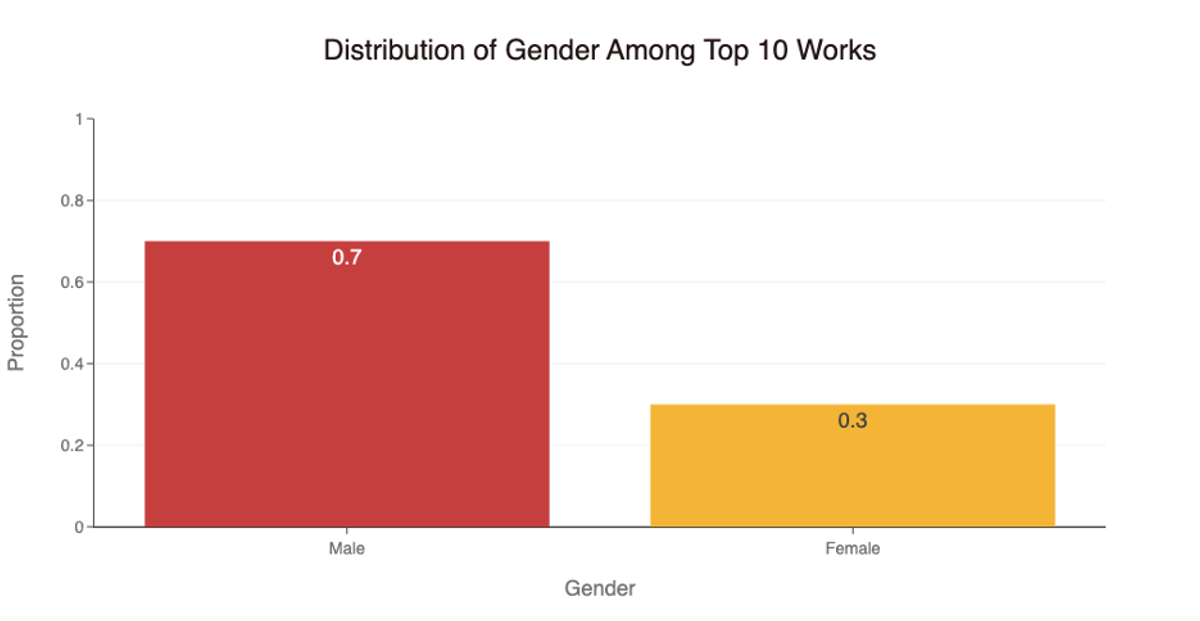 Figure 2: Gender breakdown of the authors of the top 10 most assigned works in Hum 10 from 2015–2023.
Figure 2: Gender breakdown of the authors of the top 10 most assigned works in Hum 10 from 2015–2023. Figure 3: Gender breakdown of the authors of the bottom 10 most assigned works in Hum 10 from 2015–2023.
Figure 3: Gender breakdown of the authors of the bottom 10 most assigned works in Hum 10 from 2015–2023.While the analysis of gender representation sheds light on historical disparities in literary participation, a similar exploration of national origins within the Hum 10 curriculum reveals intriguing patterns. The dominance of certain nationalities within the top-ranked works raises questions about the relative weight the course places on specific cultural narratives and its inclusion (or lack thereof) of diverse global perspectives.
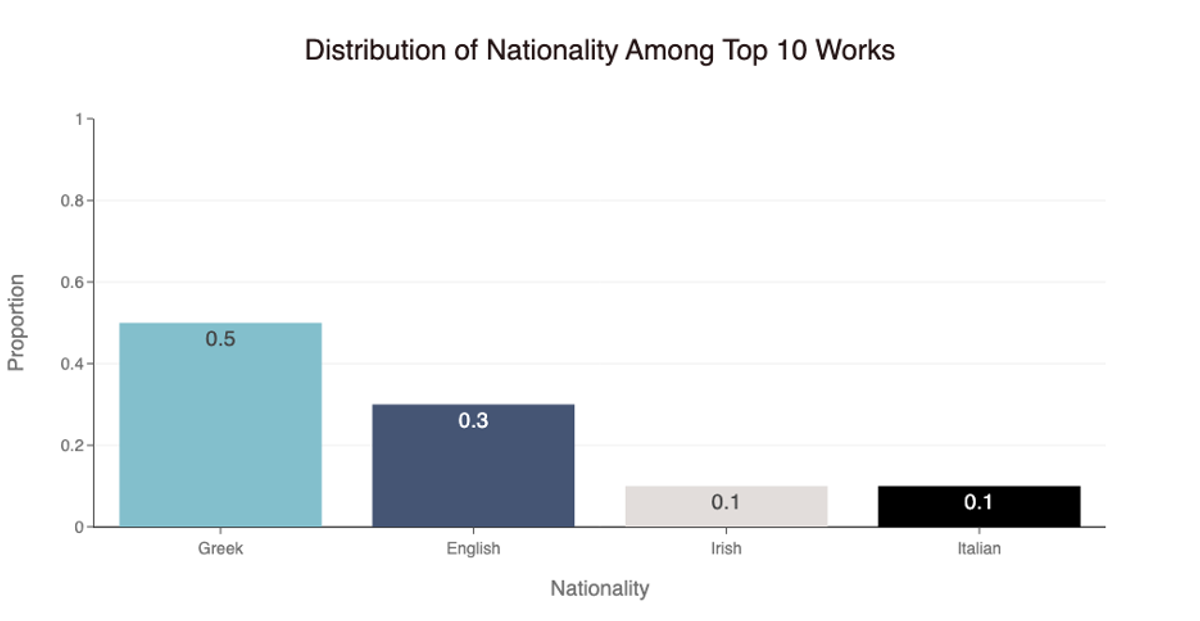 Figure 4: Nationality breakdown of the authors of the top 10 most assigned works in Hum 10 from 2015–2023.
Figure 4: Nationality breakdown of the authors of the top 10 most assigned works in Hum 10 from 2015–2023.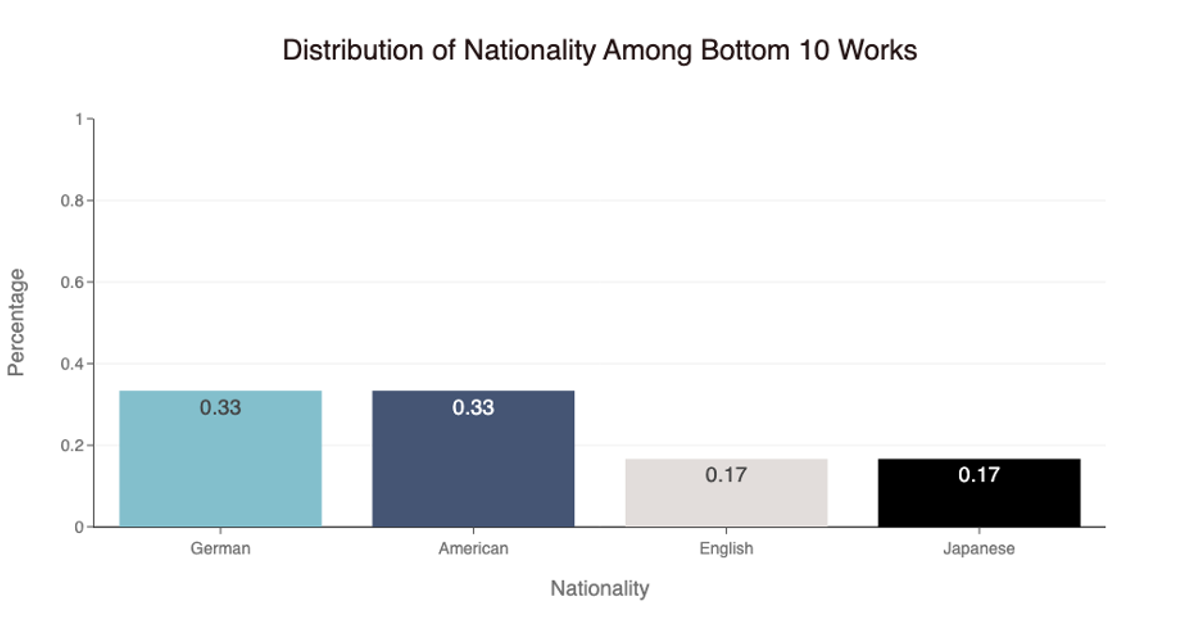 Figure 5: Nationality breakdown of the authors of the bottom 10 most assigned works in Hum 10 from 2015–2023.
Figure 5: Nationality breakdown of the authors of the bottom 10 most assigned works in Hum 10 from 2015–2023.Greek authors make up the largest proportion of the Hum 10 readings. This dominance is likely due to the enduring salience of ancient Greek literature, like the Iliad and the Odyssey, which hold a prominent place in the curriculum due to their historical significance and literary impact in the humanities.
Conversely, the composition of the bottom ten works displays a more equal distribution among nationalities. German and American contributions seem notably more prevalent within this segment. It's important to highlight the persistence of English as a nationality present in both sets of rankings, suggesting the relevance of English literature throughout the course. However, given that almost all of these nationalities are of Western origin, this brings into question the homogeneity of the cultural perspectives represented within the course.
A Timeline of Readings
The different time periods covered in Hum 10 show that the course aims to give students a wide view of how stories have evolved over time, helping them understand literature in a bigger historical context. The range of texts span from around 700 BCE to the 20th and 21st centuries, with a slight skew rightwards towards modern-day texts. Are these texts included to add new perspectives or to possibly challenge older ways of thinking about literature?
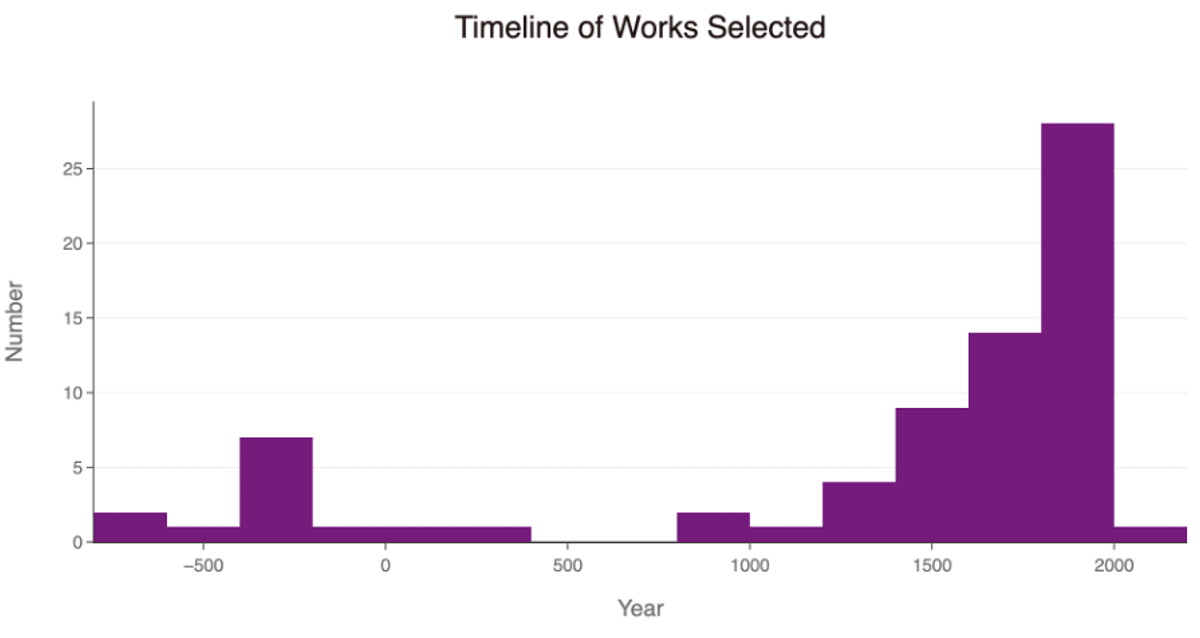 Figure 6: Number of texts assigned in Hum 10 by year of publication.
Figure 6: Number of texts assigned in Hum 10 by year of publication.Author Demographics
Over time, Hum 10 has begun to include more texts written by non-Western authors, but the syllabus is still dominated by Western influences.
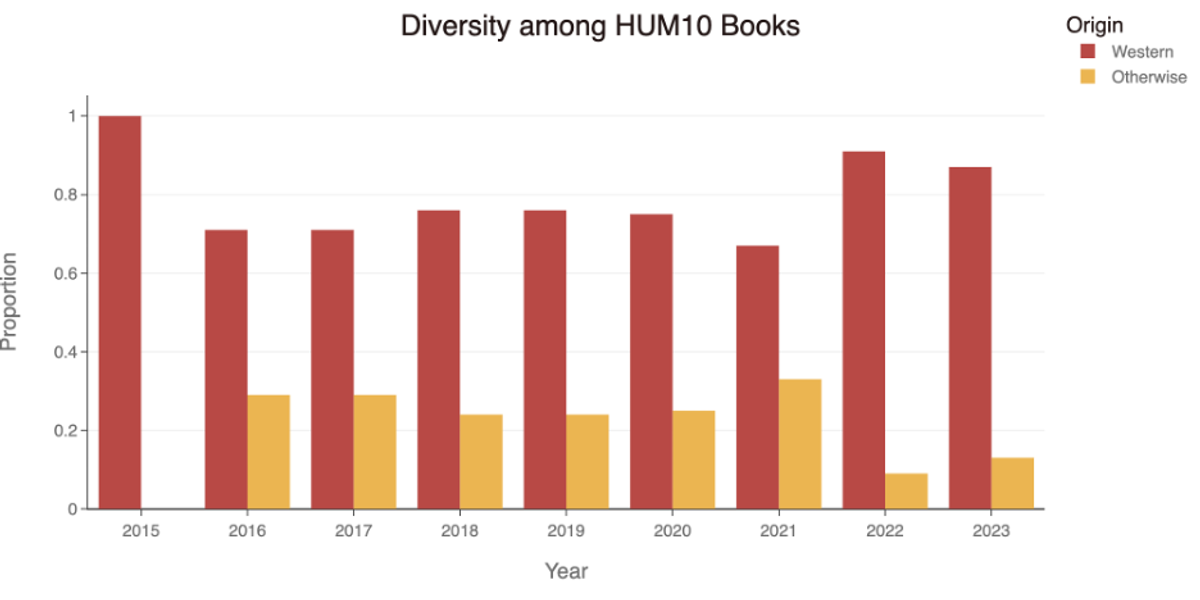 Figure 7: Distribution of assigned texts by Western and non-Western authors in Hum 10 from 2015–2023.
Figure 7: Distribution of assigned texts by Western and non-Western authors in Hum 10 from 2015–2023.Hum 10 has also increased the presence of female authors among their selected readings, but male authors continue to dominate the selected texts. The below graph includes a third “ambiguous” category to account for mostly ancient literary pieces that do not have clear authors or origins.
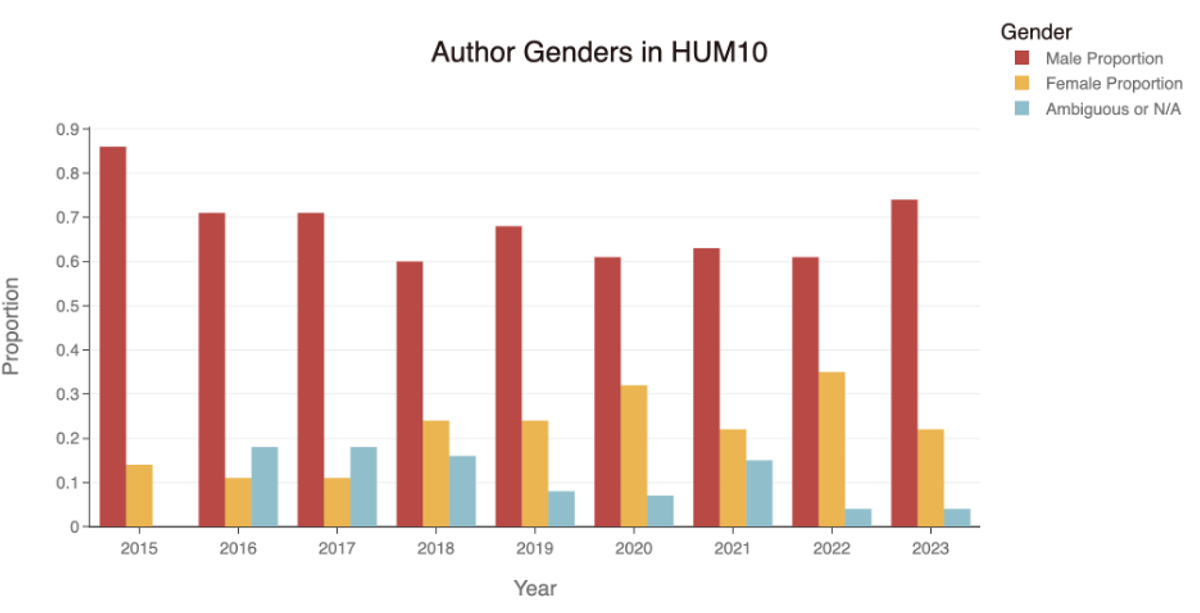 Figure 8: Gender breakdown of assigned authors in Hum 10 from 2015–2023.
Figure 8: Gender breakdown of assigned authors in Hum 10 from 2015–2023.Caveats and Conclusion
While this analysis sheds light on the breadth of literary works included in Hum 10, certain challenges complicate our assessment. For example, the selection of texts might be influenced by the availability and personal interests of professors. This factor introduces subjectivity that could impact the observed distribution across different time periods. Complications further arise when establishing precise chronological placements for texts, especially with religious works that often lack clear authorship or have disputed origins. This ambiguity affects the accuracy of our categorization.
Attempting to assign singular genres or forms to texts becomes complex when works exhibit varied genre compositions or do not have a straightforward categorization. Additionally, the absence of quantitative data regarding the prominence or readership of texts during different times prevents a comprehensive analysis. Without quantifiable metrics, assessing the significance of various works becomes challenging.
Notably, there was a lack of women authors in ancient times. Thus, certain patterns may reflect the availability of texts in certain time periods. This disparity skews the representation within our analyzed timeline, impacting the perceived breadth and inclusivity of the course's offerings.
Of course, it’s important to keep in mind that developing skills to analyze intertextuality is a key goal of Hum 10: highlighting similarities between texts and drawing from comparable literary canons could very well be an intentional choice to aid students as they learn to draw meaningful connections between texts. Furthermore, Hum 10 does not explicitly claim to be a comprehensive overview of the greatest pieces of literature in history, and is further constrained by the interests of available professors. With this in mind, perhaps complaints regarding Hum 10’s syllabus diversity could be remedied with small changes to its description to more accurately represent the works selected.
Our dataset with data, analysis, and visualizations can be found here.
